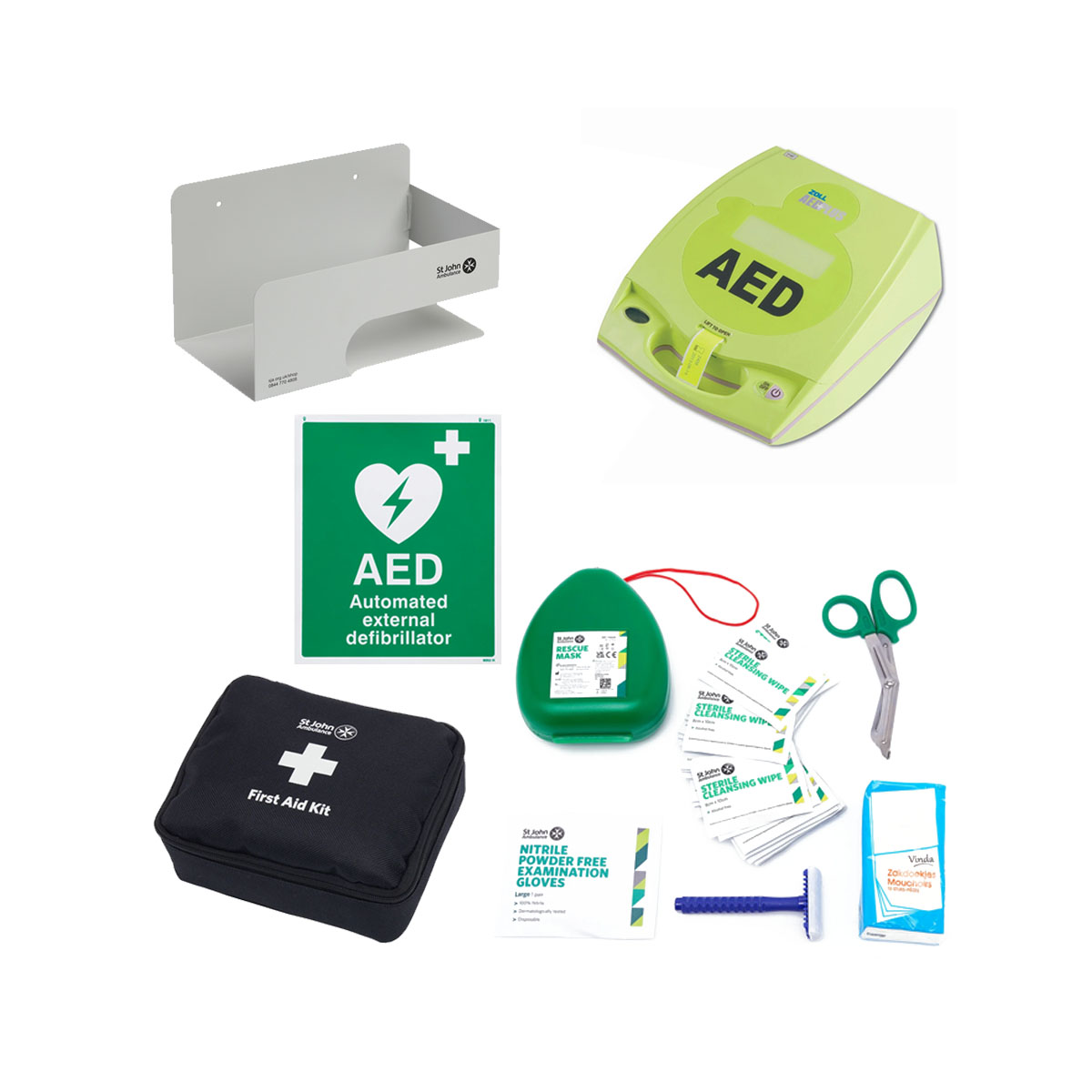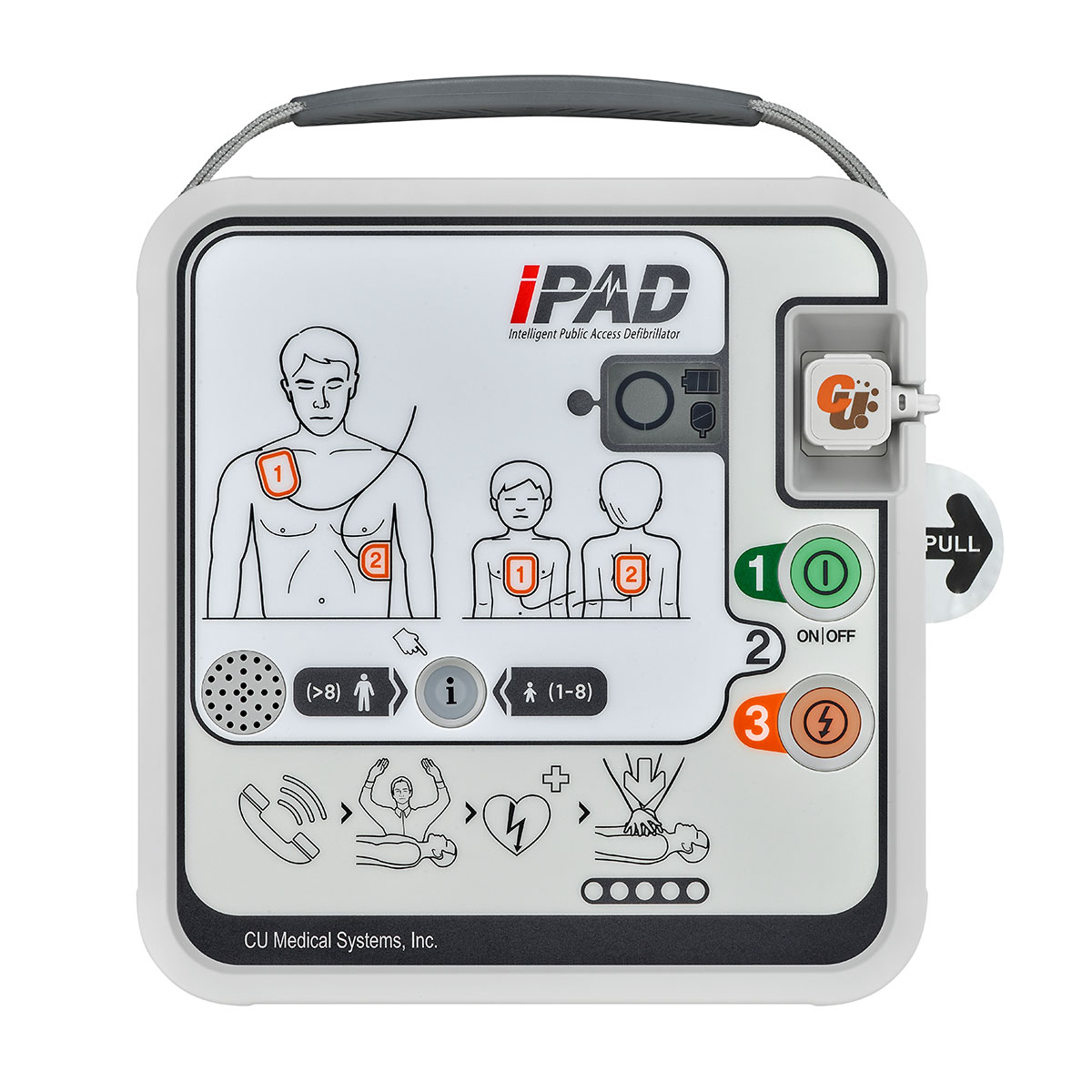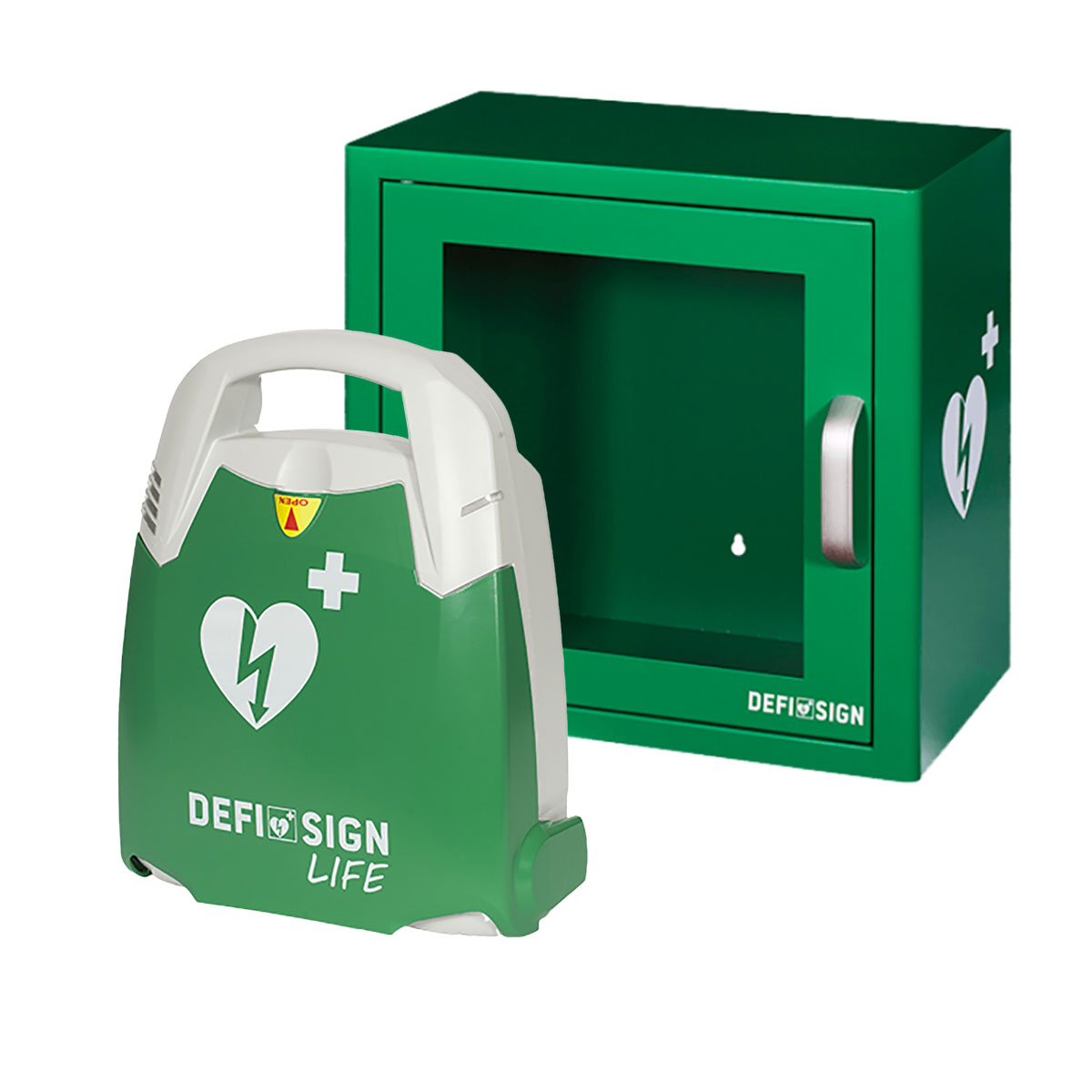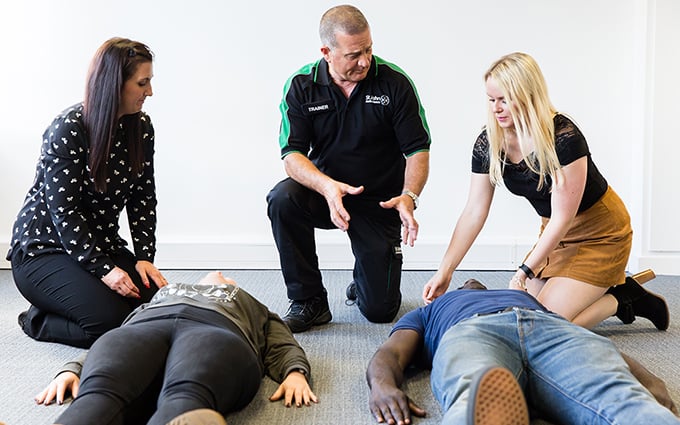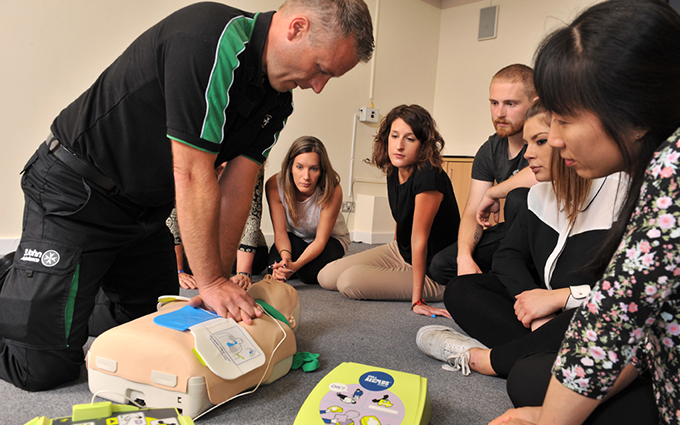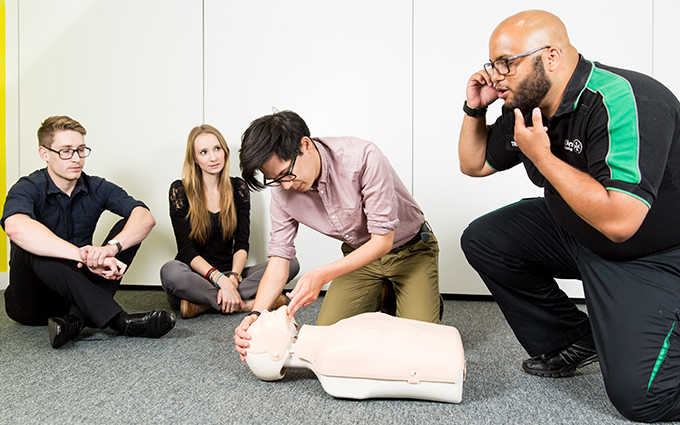Published: 8th May 2025.
Last updated: 8th May 2025.
Author: Cara Sherratt.
Contents
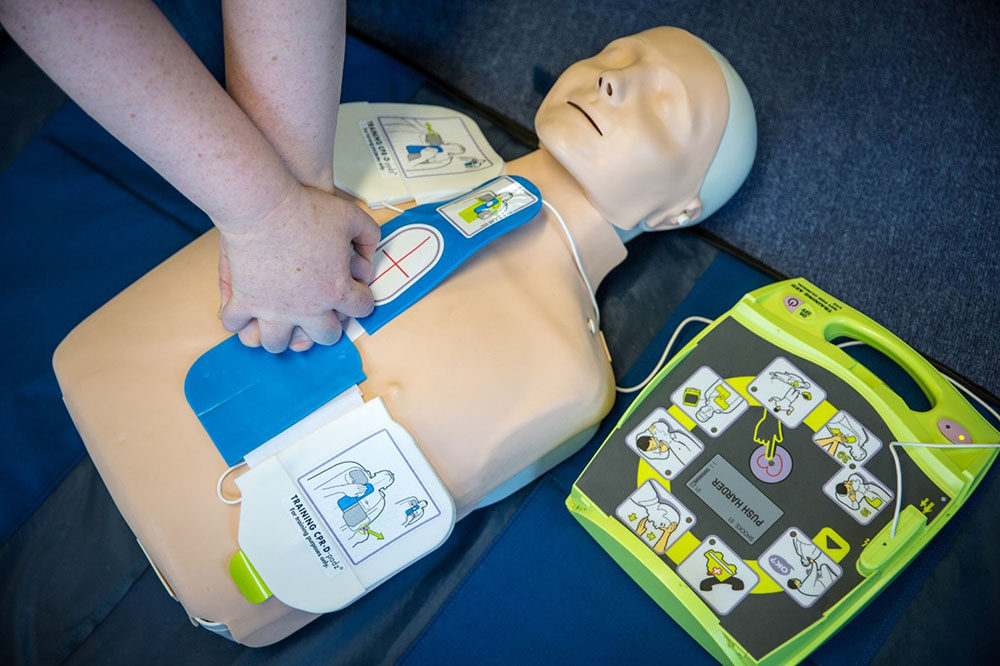
A cardiac arrest is the ultimate medical emergency. A cardiac arrest is when your heart suddenly stops pumping blood around your body. With most cardiac arrests occurring in the home (72%) or the workplace (15%), proper first aid training paired with the installation of a defibrillator could help save thousands of lives if implemented across the country.
Although we might not like to think about this happening to us, or at our place of work, we as individuals, managers, owners and employees must take responsibility for the potential “what if” of workplace illness.
The combination of bystander cardiopulmonary resuscitation (CPR) with the use of AED has been proven to significantly increase the odds of survival. Studies have shown that early defibrillation within 3–5 minutes of collapse can increase survival rates by as much as 50-70%, which is a huge number when attempting to save a life.
However, for every minute that someone's in cardiac arrest without receiving CPR and having a defibrillator used on them, their chance of survival decreases by 10%. The statistical importance of having a defibrillator in your workplace is unarguable, but what are some further signs that your workplace requires a defibrillator?
There is Diversity in Your Workplace Demographic
Whether you work in an office environment or on-site, it is important to evaluate the diverse nature of your workplace environment. Do you work with people of varying ages? Do you work with people of different genders, ethnicities or socio-economic backgrounds?
Risk factors for cardiac arrest and other heart related issues include age, with over 65’s at largest risk, but with cardiac arrests also happening to young people and children – in fact 12 under 35 year olds a week are lost to sudden cardiac arrest in the UK Regarding gender, most cardiac arrests occur in men, however women’s risk increases after menopause.
Looking at the impact of race and ethnicity, black people have been noted to have double the risk of dying from cardiac arrest than white people, with black women having a higher risk than that of their male counterparts. Additionally, African Americans were an average of six years younger than Caucasians when they experienced sudden cardiac arrest, meaning that these individuals are far more likely to still be in the workforce when experiencing cardiac arrest.
The diverse nature of genetics represented in the workplace is a clear sign that you should have a defibrillator present. With such a huge amount of risk factors associated with a wide range of demographics, it is always better to remain on the side of caution when it comes to dealing with cardiac arrest.
Each person in your workforce will be made up of a unique and vastly different set of characteristics, with lifestyle factors and family history also placing people at risk for cardiac arrest.
There Are Regular Office or On-Site Days
Do you attend an office or are on-site once a week or more? It may seem obvious but if you or your colleagues attend a work or site environment for any period of time throughout the working week, your need for a defibrillator naturally rises.
If your workplace invites or expects employees to attend in-person a particular meeting point, the presence of individuals highlights the need for proper health and safety, fire and first aid knowledge and equipment.
Regular in-person attendance is a sign that your workplace is in greater need of equipment such as a properly stocked first aid kit and defibrillator, to help save the lives of your colleagues, or visitors - if they were to need resuscitation.
Your Work Environment and Workplace Culture Vary
Every person’s workplace is different. Some workplace environments can be stressful, fast-paced and challenging whereas others may be more relaxed. Some, such as hospitality or event industries, may include the serving of alcohol. The connection between alcohol consumption and cardiac arrest is widely noted throughout studies. Patients who suffer a cardiac arrest with alcohol present in their blood may also, theoretically, differ from patients who arrest in the absence of alcohol. Alcohol may induce certain lethal arrhythmias, which may influence the effectiveness of resuscitative manoeuvres.
Aside from alcohol, some workplaces may simply prove to be more demanding or stressful environments for its employees. Stress is a factor that may lead to high blood pressure, which can pose a risk for heart attack and stroke. Stress may also contribute to cardiovascular disease risks as smoking, overeating and lack of physical activity.
It is important to review your own workplace environment to assess whether or not stress, alcohol or other workplace culture-related factors are present. See if you can spot the signs that mean your particular workplace, is in need of a defibrillator.
You Understand the Impact of Defibrillators in the Workplace
The final sign that your workplace is in need of proper equipment such as a defibrillator is that you as an individual understand the importance and potential impact of stocking such equipment. The statistics that support the use of defibrillators are the biggest indicator that a defibrillator could be essential in saving someone’s life, should they need it.
- Getting a defibrillator for your organisation, community or school is vital because there are more than 30,000 out-of-hospital cardiac arrests in the UK each year and currently less than 1 in 10 survive. Without immediate intervention with a defibrillator, most cardiac arrests are fatal.
- Only 50% of people can locate an automated external defibrillator (AED) at work. With 10,000 cardiac arrests annually in the workplace, knowing this of information has the potential to save thousands of lives.
- Most cardiac arrests(72%) occur in the home or a workplace (15%). Half of all OHCA are witnessed by a bystander.
- A sudden cardiac arrest can happen to anyone at any time. They can happen to anyone regardless of age, gender or ethnicity. This mean children or adults, males or females or anyone of any ethnicity can be affected.
- A cardiac arrest occurs when there is an electrical fault with the heart which causes it to stop. A stopped heart results in a lack of oxygenated blood being pumped to the brain meaning casualties are likely to die unless a defibrillator is used straight away.
- Your defibrillator could save the life of a complete stranger. If each defibrillator is registered on a database, it can help support those around you. There are an estimated 100,000 defibrillators across the UK, however, tens of thousands of these are unknown to ambulance and emergency services. Once located and registered, emergency services can direct bystanders to their nearest defibrillator and increase a person's chance of survival. The Circuit is the national defibrillator network which maps defibrillators across the UK, connecting them directly and automatically to each ambulance service. Ensure that your defibrillator can be found in an emergency and register it on The Circuit after purchase.
Deemed a ‘healthcare crisis’, there are around 60,000 out of hospital cardiac arrests that occur every year in the UK, according to European data. In 2019, there was a huge 7.4 million people living with heart and circulatory diseases alone. An increase in defibrillators across the country has thankfully meant more lives are being saved, so be a part of the movement and ensure your workplace understands the importance of having a defibrillator available. Don’t forget to register your defibrillator on The Circuit and inform others of its location, allowing greater access to the life-saving equipment.
To ensure your workplace or local communities are fully prepared in case of a cardiac arrest, browse our range of defibrillators and take advantage of current deals, which could currently save you up to £50* on select defibrillators.
* On selected lines only, saving value true at time of writing 01/05/2025, offers apply to specified defibrillator products until 30th May 2025 via our website and Customer Services team. St John Ambulance has the right to change prices without notice. Cannot be used in conjunction with any other offer.
Sources
https://www.resus.org.uk/public-resource/defibrillation
https://pmc.ncbi.nlm.nih.gov/articles/PMC10676231/
https://www.resus.org.uk/about-us/news-and-events/make-defibs-accessible-247-help-increase-survival-rates-across-uk-say
https://www.bhf.org.uk/how-you-can-help/support-our-campaigns/until-i-died
https://risk-assessment-products.co.uk/blog/how-many-lives-are-saved-by-defibrillators-in-the-uk/
https://www.resus.org.uk/library/2021-resuscitation-guidelines/epidemiology-cardiac-arrest-guidelines
https://cpr.heart.org/en/resources/cpr-facts-and-stats
https://www.bhf.org.uk/how-you-can-help/how-to-save-a-life/defibrillators/getting-a-defibrillator-what-you-need-to-know
https://www.nhlbi.nih.gov/health/cardiac-arrest/causes
https://www.cedars-sinai.org/blog/new-research-shows-racial-gap-for-cardiac-arrest.html
https://pubmed.ncbi.nlm.nih.gov/8923581/
https://www.heart.org/en/news/2020/02/04/chronic-stress-can-cause-heart-trouble


